Elliott Studio Arts Series Sixty-Six Vacuum Tube Stereo Amplifier
| Beauty AND the Beast |
|
|
|
December 2009 |
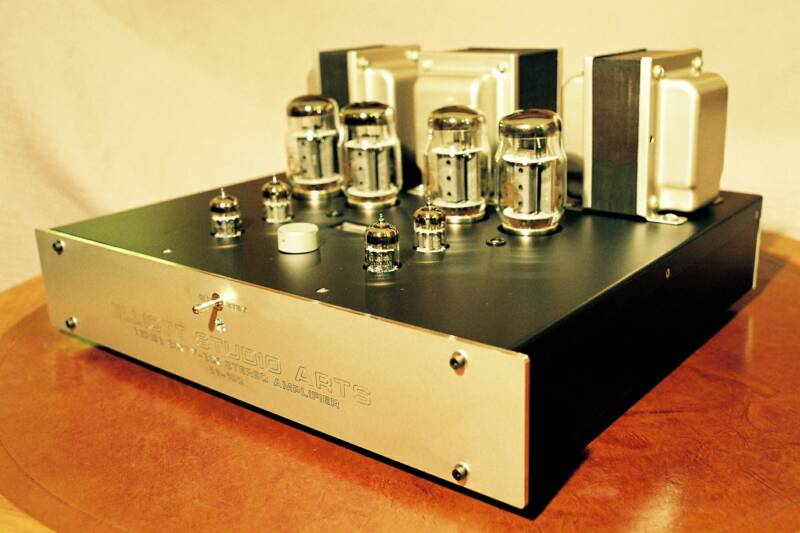
Over the years, I’ve traveled to many places in pursuit of “perfect sound.” From the world’s greatest high-end shows in Munich, Germany to the world’s largest high-end audio bazaar, located smack-dab in the heart of downtown Singapore, to the ancient city of Isesaki, Japan – home to audio guru Ken Ishiguro (Acoustic Revive). Regardless of place, venue, or setting, high-end vacuum tube electronics were to be seen. And despite the growing list of low-maintenance, high-power analog switching (incorrectly labeled “digital”) amplifiers on the market, the one thing STILL adored by cognoscenti the world over is tubes. Yeah, the “Tubes Rule” catch phrase appears to apply more today than ever. I can see why this is. As I’ve always said, “Tubes can create a 3D sound stage in a phone booth.”
Trust me, I’ve had my share of fascination with tubes starting back in the day, when Counterpoint (a hybrid design if I remember) was a hot commodity. Reminiscing further, my search for the holy grail of “warm, relaxed sound” led me to – and through – such noteworthy names as Melos, Sonic Frontiers, Audio Research, Atma-sphere, Quicksilver, Conrad Johnson, Art Audio, Audible Illusions, VTL, Mastersound, Jadis, and KR Enterprises. I settled down with the Japanese Zanden series of single-ended designs. Later, I found myself enjoying the Pass Aleph 0, a single-ended solid-state device. This led me to other, similar types, such as Balanced Audio Technologies, which featured minimum gain stages, and Bel Canto Design, which employed the first Class-T (Tripath) implementation with super-low distortion, super-high efficiency, coupled with lots of power.
My reasons for living with the Bel Canto were simple: I wanted a solid-state amplifier that could provide more power, better bass and yet maintain the magical reproduction of the human voice that vacuum tubes can, without the fuss and expense of vacuum tubes. Impossible you say? Perhaps. There’s no denying that tubes have a certain magic reproducing voices and strings that are hard, if not entirely impossible, to duplicate using anything other than… tubes.
Kevin Elliott, designer of the Elliott Studio Arts Series Sixty-Six tube amplifier, here under review, knows what tubes can do, and what they can’t do, better than most designers in the business. He’s dedicated an enormous portion of his life to studying and manipulating tube circuit designs. Elliott’s first major project was an all-tube, four-channel microphone preamp in 1999, which led to the creation of the company name, Elliott Studio Arts. Through countless experiments, trials, and errors over the past decade, Elliott says he’s learned a great deal about tubes. In building his amplifier, Elliott had one goal in mind: an affordable and inherently gorgeous-sounding tube amplifier with muscle – right up my alley. He attained his goal with his current, propitious design, the Series Sixty Six.
On his website (elliottstudioarts.com), Elliot describes the basic design of the ESA Sixty-Six: “The circuit is (loosely) based on the classic Williamson circuit. It features custom wound ultralinear output transformers in a low global feedback, low gain, low distortion and low output impedance topology. The parts chosen are over-specified for longevity. The power supply is overbuilt with computer-grade ‘large can’ caps, filter choke, high-speed bypasses, solid state rectification and a huge power transformer for very stable regulation. The design has proven to be very reliable – the prototype has been running in my reference system for over two years on the original set of tubes; in fact, it is frequently pressed into service as the main amplifier in a PA system which I use for small events such as wedding receptions, talent shows etc.”
The Sixty-Six is rated at 100 watts per channel ultralinear into 4 ohms (switchable to triode mode at 60 watts per channel, THD 0.889%, THD+N 0.895%1kHz @ 100W into 4 Ohms), and features custom wound power and output transformers, cooling fan, bias adjustment meter, over-specified parts, high temperature wiring, and both RCA and XLR inputs. The Sixty-Six comes with a 5-year warranty, excluding vacuum tubes.
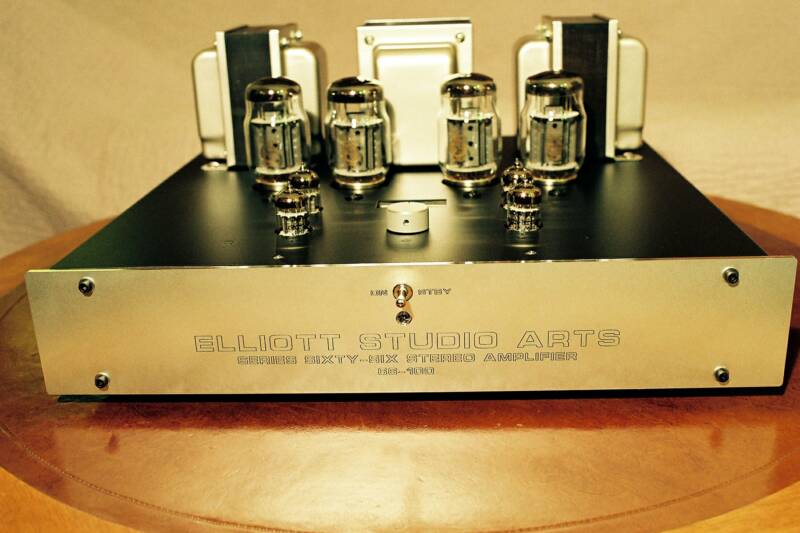
Physically, the ESA Sixty-Six looks much like the old Conrad Johnson Premier series with its sleek, low profile and open chassis design. Introductory retail price is $2,995.00. And considering the way prices are continually soaring in our beloved hobby these days. At the same time, the dollar continues to weaken globally, and I consider the cost of the Sixty-Six very affordable.
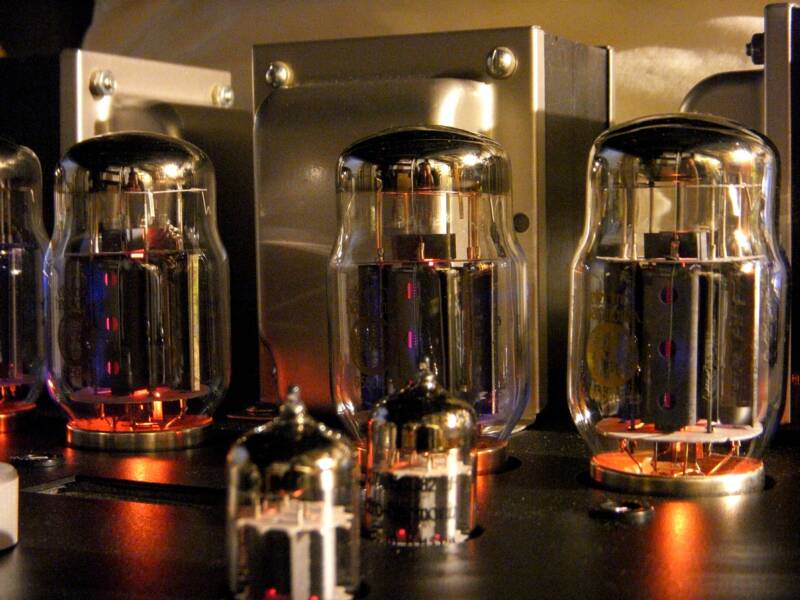 The amplifier arrived well-packed in two huge corrugated cardboard boxes. Setup was pretty straightforward thanks to a well-written owner’s manual. In the second carton were four 12AU7A input tubes and four 6550 power output tubes. Four bias controls, located in front of each power tube, were adjusted using a small screwdriver. Once the tubes were installed, powering up the ESA Sixty-Six was done by flipping the power toggle switch from the Off (center) position to Standby (right). Standby preheats the bias supplies, tube filaments, and internal components and is recommended for 30 seconds prior to setting the power switch to its On position. Once in the On position, I located the bias knob and meter on the top chassis. The bias knob’s “Off” position is in the center of travel. Turning the bias switch from V1 to V2 corresponds to the power tubes on the left and right sides, respectively. Recommended bias is 40 milliamperes, easily set in less than five minutes. After a ten-minute warm-up and a second bias check, the ESA Sixty-Six was ready for my initial impressions.
The amplifier arrived well-packed in two huge corrugated cardboard boxes. Setup was pretty straightforward thanks to a well-written owner’s manual. In the second carton were four 12AU7A input tubes and four 6550 power output tubes. Four bias controls, located in front of each power tube, were adjusted using a small screwdriver. Once the tubes were installed, powering up the ESA Sixty-Six was done by flipping the power toggle switch from the Off (center) position to Standby (right). Standby preheats the bias supplies, tube filaments, and internal components and is recommended for 30 seconds prior to setting the power switch to its On position. Once in the On position, I located the bias knob and meter on the top chassis. The bias knob’s “Off” position is in the center of travel. Turning the bias switch from V1 to V2 corresponds to the power tubes on the left and right sides, respectively. Recommended bias is 40 milliamperes, easily set in less than five minutes. After a ten-minute warm-up and a second bias check, the ESA Sixty-Six was ready for my initial impressions.
Using loudspeakers ranging from the Volent VL3s to the amazingly musical Revolver Music 3 bookshelf monitors, and electronics that included the Tact 2.2 XP, Zanden’s tube preamplifier, and the Behold Gentile integrated (as a preamp), I got a very good idea of what worked best with the ESA Sixty-Six. My CD sources included the Holfi battery-powered player, the Zero One Mercury hard-drive player, and the remarkable PS Audio Perfect Wave transport (using Gentile’s DAC section). Cabling was by Entreq Konstantin designs from Sweden (reviewed here by Dave Thomas).
No matter which source or preamp I used, the sound of the ESA Sixty-Six was holistic, rich, and dimensional with a remarkable sense of focus. I hadn’t had a tube amp in hand for some time and found the Sixty-Six to be a pleasant surprise after living with solid state, particularly in the bass: it was quicker and tighter than I had expected. At the same time, the bass has a quick first step, making this particular amp sound both nimble and harmonically rich. I expected a luscious, sweet, and airy sound, and the ESA Sixty-Six delivered. Paired with the Behold Gentile, I found the overall sound of the Sixty-Six closer to neutral than the typically warm overtones one hears from a tube amplifier. With the Zanden 3000 line-stage in the mix, the Sixty-Six sounded more burnished on voices, while slower and somewhat fuller sounding in the bass and lower midrange.
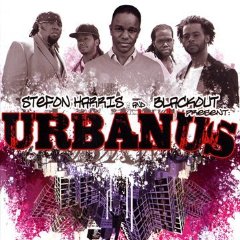 Listening to the Stefon Harris and Blackout presents Urbanus CD, I got the sensation that the musicians were playing in a very humid space. Everything sounded a little thicker than I am usually accustomed to. (Which is to say, solid-state with a strong dose of digital manipulation.)
Listening to the Stefon Harris and Blackout presents Urbanus CD, I got the sensation that the musicians were playing in a very humid space. Everything sounded a little thicker than I am usually accustomed to. (Which is to say, solid-state with a strong dose of digital manipulation.)
Especially Stefon Harris’ excellent play on the vibraphone. Vibes are percussive and, upon being struck, rang longer. I had seen this group perform only a few weeks back at the Union County Performing Arts Center in Rahway, New Jersey. The sound at that concert was unusually coherent and natural, which I found surprising for such a cavernous space. Most importantly, the live performance obviated my critical, audiophile side. Everything sounded so harmoniously correct that there wasn’t anything to be critical about. The ESA Sixty-Six does the same thing. Reproducing this particular disc, the sound might be a little too rich for my palette, but make no mistake about it, when listening to the ESA Sixty-Six, you’re getting the many virtues of a tube amplifier.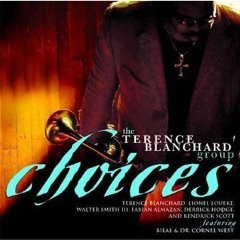
Winding Roads, from legendary jazz trumpeter Terence Blanchard’s latest CD Choices, is an excellent example of what I love so much about jazz ballads. This remarkable 12-minute cut features Dr. Cornell West (famed philosopher, educator, and activist) delivering an opening monologue on the “Choices” one makes in life, about spirituality, religion, and relationships (love). Dr. West’s introduction, combined with superb music and musicianship, made me introspective: the very purpose of a great composition! The ESA Sixty-Six took this beautiful song, enhanced its harmonic richness, and the result was splendiferous.
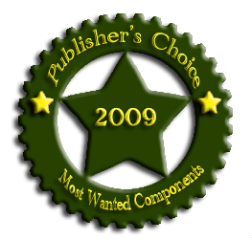 Tube sound is sometimes said to be addictive, and having lived with the ESA Sixty-Six, I’d tend to agree. There were times when listening to massed strings, and especially the human voice, where the sound was so harmonically rich and atmospheric, I caught myself thinking about solid-state as a somewhat dubious alternative. However, I believe well-designed solid-state can be equally excellent in terms of harmonic richness and timbral accuracy. I realize many tube-aholics will call me crazy, but I have experienced this too often and on too many systems to question it any longer. In the final analysis, I think system synergy wins, hands down, over any particular type of circuit topology or circuit components. Tubes have one significant advantage over solid-state: they sound better right out of the box with the least amount of tweaking. Solid-state, on the other hand, may require more tweaking to sound its best, but it will live longer and require far less maintenance. In the end, pick your poison, because you’re gonna die from.
Tube sound is sometimes said to be addictive, and having lived with the ESA Sixty-Six, I’d tend to agree. There were times when listening to massed strings, and especially the human voice, where the sound was so harmonically rich and atmospheric, I caught myself thinking about solid-state as a somewhat dubious alternative. However, I believe well-designed solid-state can be equally excellent in terms of harmonic richness and timbral accuracy. I realize many tube-aholics will call me crazy, but I have experienced this too often and on too many systems to question it any longer. In the final analysis, I think system synergy wins, hands down, over any particular type of circuit topology or circuit components. Tubes have one significant advantage over solid-state: they sound better right out of the box with the least amount of tweaking. Solid-state, on the other hand, may require more tweaking to sound its best, but it will live longer and require far less maintenance. In the end, pick your poison, because you’re gonna die from.
The Elliott Studio Arts Sixty-Six is a wonderful sounding amplifier, aesthetically pleasing to both the eyes and ears. In the past six months, I’ve not had any issues with it whatsoever. I enjoyed my time with it enough to qualify it as a reference for price and performance. An easy win for my Stereo Times’ Publisher’s Choice 2009 Most Wanted Component Award!

![]()
clement perry
Features and Specifications
*100 Watts per channel into 4 ohms, 20-20,000 Hz power response
*Distortion @ 1KHz, 100 Watts / 4 ohms: THD .889%, THD+N .895%
*Unbalanced RCA or optional balanced XLR inputs
*Optional Triode / Ultralinear switch (60 Watts triode mode)
*All point to point with over-specified parts and high-temp wiring
*Custom wound power and output transformers
*Choke coupled power supply w/ computer grade ‘big can’ caps
*Built in cooling fan with optional high speed operation for heavy duty use
*Built in bias adjustment setup w/ meter and switch
*Rugged precision steel chassis and engraved aluminum face plates
*Ultralinear mode output stage w/ local and nested feedback
*Low global feedback for lively sound
*Class AB operation, biased heavily into class A under 5 watts
*Tube Compliment: 4ea. 6550(standard)/KT88/KT90, 4 ea. 12AU7A
*120V / 60Hz standard – other line voltages available upon request –
*65 lb. shipping weight
*Built to order – up to three month turnaround time depending on backlog –
*5 year limited warranty on parts and labor (not tubes).
INTRODUCTORY PRICE: $2995.00* (shipping extra)
Elliott Studio Arts, LLC
Seattle, WA
Kevin Elliott, President
206-351-7248
Email: Info@elliottstudioarts.com
Website: http://www.elliottstudioarts.com/
![]()
Don’t forget to bookmark us! (CTRL-SHFT-D)
Stereo Times Masthead
Publisher/Founder
Clement Perry
Editor
Dave Thomas
Senior Editors
Frank Alles, Mike Girardi, Russell Lichter, Terry London, Moreno Mitchell, Paul Szabady, Bill Wells, Mike Wright, and Stephen Yan,
Current Contributors
David Abramson, Tim Barrall, Dave Allison, Ron Cook, Lewis Dardick, John Hoffman, Dan Secula, Don Shaulis, Greg Simmons, Eric Teh, Greg Voth, Richard Willie, Ed Van Winkle, Rob Dockery, Richard Doron, and Daveed Turek
Site Management Clement Perry
Ad Designer: Martin Perry



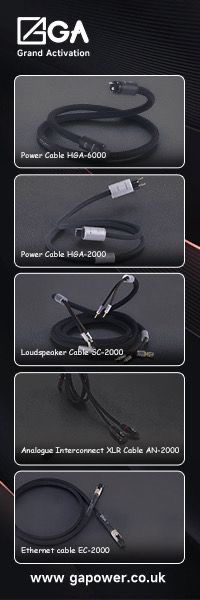

Be the first to comment on: Elliott Studio Arts Series Sixty-Six Vacuum Tube Stereo Amplifier